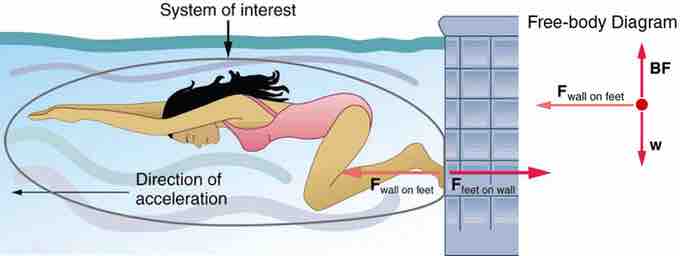Sir Isaac Newton was a scientist from England who was interested in the motion of objects under various conditions. In 1687, he published a work called Philosophiae Naturalis Principla Mathematica, which contained his three laws of motion. Newton used these laws to explain and explore the motion of physical objects and systems. These laws form the bases for mechanics. The laws describe the relationship between forces acting on a body, and the motion is an experience due to these forces. Newton's three laws are:
- If an object experiences no net force, its velocity will remain constant. The object is either at rest and the velocity is zero or it moves in a straight line with a constant speed.
- The acceleration of an object is parallel and directly proportional to the net force acting on the object, is in the direction of the net force and is inversely proportional to the mass of the object.
- When a first object exerts a force on a second object, the second object simultaneously exerts a force on the first object, meaning that the force of the first object and the force of the second object are equal in magnitude and opposite in direction.
Newton's Third Law of Motion
Newton's third law basically states that for every action, there is an equal and opposite reaction. If object A exerts a force on object B, because of the law of symmetry, object B will exert a force on object A that is equal to the force acted on it:
In this example, FA is the action and FB is the reaction. You have undoubtedly witnessed this law of motion. For example, take a swimmer who uses her feet to push off the wall in order to gain speed . The more force she exerts on the wall, the harder she pushes off. This is because the wall exerts the same force on her that she forces on it. She pushes the wall in the direction behind her, therefore the wall will exert a force on her that is in the direction in front of her and propel her forward.

Newton's Third Law of Motion
When a swimmer pushes off the wall, the swimmer is using the third law of motion.
Take as another example, the concept of thrust. When a rocket launches into outer space, it expels gas backward at a high velocity. The rocket exerts a large backward force on the gas, and the gas exerts and equal and opposite reaction force forward on the rocket, causing it to launch. This force is called thrust. Thrust is used in cars and planes as well.